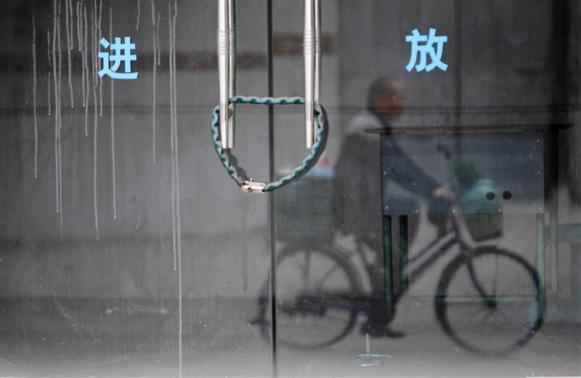Grim outlook for China's small factories
(Agencies) Updated: 2014-01-16 11:09
|
 |
|
A man rides a bicycle past a closed employment bureau in Dongguan, Guangdong province 13 January, 2014. [Photo/Reuters] |
Scores of factories in China's manufacturing heartlands have closed earlier than usual for the country's biggest annual holiday due to weak orders and rising costs, workers and owners say, suggesting a rocky outlook for a key sector of the economy.
While official trade data remains mildly positive, visits to five factory towns in coastal industrial hubs found that in some areas perhaps a third of manufacturers had already begun closing weeks before the Lunar New Year break in late January.
In some cases anemic orders from key markets such as the United States and Europe were blamed.
Others were being forced to curtail production because of a labor shortage, a symptom of shifting demographics, that has afflicted manufacturers for several years and many say is getting worse.
"Lots of people have left already. I would say around a third of the workers," said Ren Lipeng, a factory worker riding a rusty bicycle along a dusty avenue where many shops and restaurants were shuttered in Changping, southern China.
Factories in the sprawling Pearl River Delta, in southern Guangdong province, and the eastern Yangtze River Delta industrial hinterland near Shanghai - which churn out well over half of China's exports - were noticeably quieter this week than during previous visits by Reuters.
In the south, many smaller plants had closed, with a stream of migrant workers crowding train and bus stations as they headed home to inland provinces in an annual exodus for up to six weeks of unpaid leave, far longer than in previous years.
Balancing act
With analysts expecting China to soon announce its slowest annual economic growth rate for more than a decade, Beijing has stepped up efforts to wean the economy off its heavy reliance on investment and exports in favor of higher domestic consumption.
In December, policymakers unveiled the boldest economic and social reforms in nearly three decades to pursue that goal.
Trade, however, remains a hugely important economic engine as China attempts the difficult balancing act of maintaining its official target rate of growth at 7.5 percent while shifting the economy away from lower-end manufacturing.
Official export numbers showed mild growth in December.
But economists have long queried the numbers as skewed and misleading.
- NHTSA says finds no 'defect trend' in Tesla Model S sedans
- WTO rare earth ruling is unfair
- Amway says 2014 China sales may grow 8%
- President Xi in Europe: Forging deals, boosting business
- CNOOC releases 2013 sustainability report
- Local production by Chery Jaguar Land Rover this year
- Car lovers test their need for speed in BMW Mission 3
- China stocks close mixed Monday

















